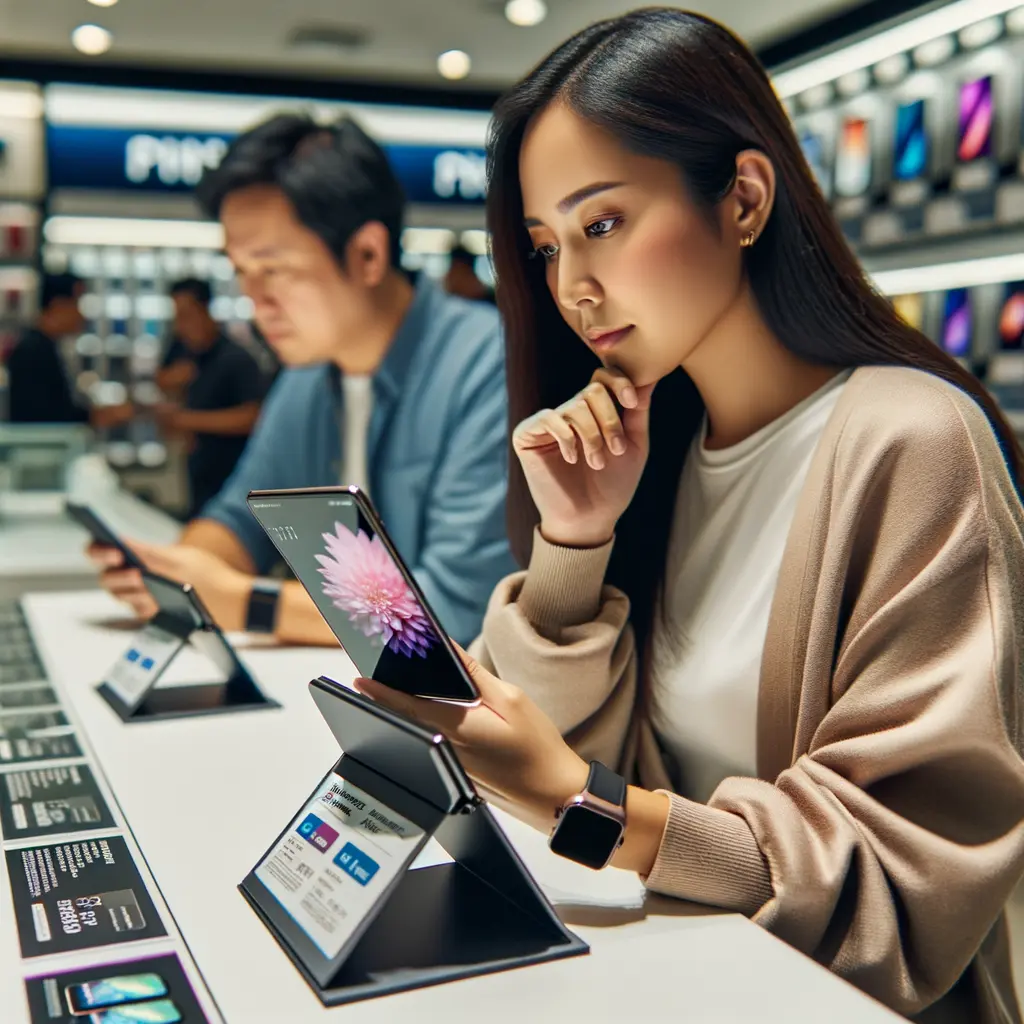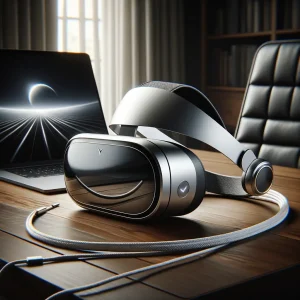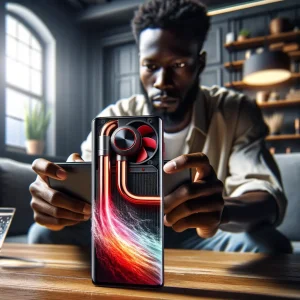Folding Phones 2025: Hype vs. Hard Reality
Folding phones have spent the past half-decade dominating tech headlines, yet they still make up only a sliver of total smartphone sales. In 2025 the marketing is louder than ever—slick ads show the Galaxy Z Fold 7 opening like a futuristic book or a pocket-sized Z Flip snapping shut with a satisfying clap—but the real-world story is more complicated. Early adopters praise the wow factor and the freedom of carrying a near-tablet in their pocket. However, mainstream shoppers continue to ask one blunt question: do folding phones solve a meaningful problem or simply look cool?
The answer lies in expectations. Most of us have been conditioned to reach for our phones hundreds of times a day for quick, friction-free tasks. Adding a hinge introduces an extra step—often two hands—to every interaction. That single moment of delay feels minor, yet across dozens of unlocks it becomes a daily annoyance. Meanwhile traditional slabs have quietly improved: thinner bezels, bigger screens, tougher glass and batteries that last all day. When a conventional handset already meets 90 percent of user needs, a foldable has to justify its price, weight and fragility with genuine advantages, not just novelty.
Throughout this article we’ll examine whether the latest folding phones finally cross that threshold or if consumers are right to remain skeptical.

Durability Deep Dive: Screens, Hinges and the Infamous Crease
Ask any engineer and they’ll tell you the biggest obstacle facing folding phones is simple physics. Flexible plastic OLED displays are marvels of manufacturing, but they are also softer than the Gorilla Glass Victus 3 found on most 2025 flagships. That softness means fingerprints, micro-scratches and oil build-up appear within days, even with the factory screen protector. Peel that layer off and you risk voiding your warranty or worse—permanent pixel damage.
Hinges are an equally fragile frontier. Samsung claims the Galaxy Z Fold 7 survives 400,000 folds, yet long-term testers already report subtle wobble and reduced hinge tension after only twelve months. Dust ingress is still a menace; tiny particles grind against gears like sandpaper. While IPX8 water resistance is an impressive leap, the ‘X’ still stands for “no official dust rating.” In dry climates or beach vacations, a single grain can translate to a costly repair.
Then there’s the crease. Marketing footage downplays it with clever lighting, but angle the device just right and the valley is obvious. Over time that crease deepens, much like the spine of a well-read paperback. Some users stop noticing it during Netflix sessions; others can’t unsee it. Ultimately, foldable phone durability remains the Achilles’ heel preventing many buyers from crowning the best folding phone 2025 as their daily driver.

Friction Over Function: Why Convenience Still Wins
Smartphones rewired our brains for instant gratification. Tap, swipe, done—no waiting. Folding phones interrupt that rhythm. Even the slickest clamshell foldable phones add two extra movements: you have to flip them open and then unlock the screen. The larger book-style Galaxy Z Fold 7 demands even more effort because its unfolded width requires both hands to hold comfortably.
Psychologists call this added effort “interaction cost.” Consumers tolerate interaction cost only when the payoff is huge—think cinematic movie watching or mobile Excel spreadsheets. Yet analytics data shows that 80 percent of daily phone sessions last under 90 seconds: checking messages, scrolling social feeds, snapping a quick photo. For those micro-tasks, a slab phone’s single-hand ease still wins.
Manufacturers are aware of the problem. Samsung enlarged the outer display and Motorola refined its Razr cover screen so users can reply to messages without opening the device. These tweaks reduce friction but simultaneously undermine the selling point of a big inner panel. If buyers spend most of their day on the exterior screen, are they truly leveraging foldable magic? Internal data from carriers hints not—return rates for folding phones hover above 20 percent, nearly triple that of conventional handsets.
(You would embed the YouTube video here to let readers hear the full argument straight from the creator.)
Who Actually Benefits? Power Users, Creators and Frequent Flyers
Despite the drawbacks, folding phones are not gimmicks for everyone. Certain user groups genuinely profit from their unique hardware. Mobile content creators, for instance, appreciate the ability to preview 4K footage on a tablet-sized canvas and still slip the device into a jeans pocket. Add an S Pen and the Galaxy Z Fold 7 becomes a pocket editing suite for Lightroom, LumaFusion or CapCut.
Frequent business travelers also love foldables. Airline tray tables are cramped, and pulling out a 13-inch laptop mid-flight is awkward. An 8-inch inner display running Microsoft Teams or Google Sheets feels luxurious compared with a 6-inch slab. Road warriors can open a PowerPoint, drag items with three-finger gestures and close the phone before landing.
Then there are multitaskers. Split-screen on Android has existed for years, but on a foldable it finally feels natural. You can run Telegram on the left, Chrome on the right and float Spotify in a window above—functionality that rivals a compact tablet. For these niche audiences the price premium is justifiable, especially if it’s subsidized through trade-in promotions.
However, enthusiasts admit they often carry a second phone as a backup during strenuous activities like hiking or cycling. That confession underscores the lingering question: are folding phones a primary device or an occasional luxury?

The Road Ahead: Materials, Batteries and Pricing Must Catch Up
For folding phones to dominate the mainstream, three technological hurdles must fall. First is material science. Corning and Schott are racing to commercialize ultra-thin glass that bends without micro-fractures. When that arrives, the plasticky feel will disappear and foldable phone durability could rival today’s slabs. Second is battery density. A larger interior screen and a hinge mechanism steal precious millimeters of volume, so most foldables ship with 4,400 mAh cells—adequate but not stellar. Solid-state batteries or stacked pouch technology could restore all-day endurance without adding heft.
Third is pricing. Even after aggressive trade-ins, the best folding phone 2025 still commands around $1,600. Component costs will fall, yet true mass adoption may come only when sub-$1,000 options match flagship specs. Google’s Pixel Fold 2 Lite rumoured for early 2026 could be a pivotal moment, combining Tensor G5 silicon with a simplified hinge.
Software refinement matters too. Android 15’s adaptive layout engine and Samsung’s One UI 8 continue to polish multitasking, but third-party developers must prioritize responsive design. The day TikTok launches a foldable-optimized editing interface will be the day Gen Z starts paying attention. Until then, folding phones remain aspirational tech—a glimpse of the future rather than today’s default choice. See our deep dive on mobile battery breakthroughs and our primer on upcoming Snapdragon 8 Gen 4 performance for related insights.

Should You Buy a Folding Phone in 2025? The Final Verdict
So, after all the excitement, YouTube ads and influencer shots, should you put your money on folding phones this year? If you are a power user who edits videos on the go, a consultant living out of airports or a tech enthusiast who values innovation over cost, then yes—the Galaxy Z Fold 7 or another top contender can be thrilling. Just budget for accidental-damage insurance and keep a microfiber cloth handy.
For the average consumer the calculus is different. Conventional flagships like the Galaxy S25 Ultra or iPhone 16 Pro Max already deliver phenomenal cameras, all-day batteries and nearly bezel-less 6.8-inch screens. They do so without the weight, thickness or durability worries of a hinge. Convenience still matters more than spectacle, and every time you hesitate to open a device that’s friction in action.
Remember, folding phones are improving fast. Within a few generations we may reach scratch-resistant bendable glass, dust-proof hinges and sub-$1,000 price points. Until that convergence happens, most shoppers are better served sticking to a traditional slab—and revisiting foldables when version 10 arrives. Folding phones represent an exciting future of mobile computing, but here in 2025 the brutal truth is simple: they’re incredible showcases of engineering, just not the universal upgrade path yet.







